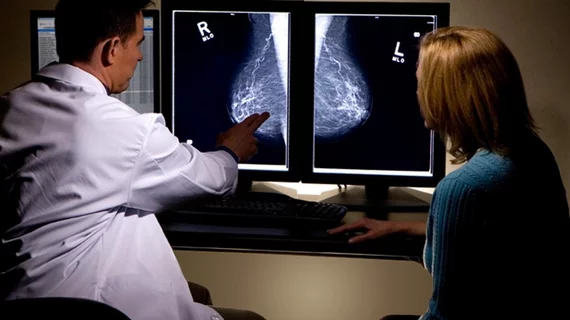3D MR fingerprinting technique shows promise in breast imaging
A team of researchers from Cleveland has developed a three-dimensional (3D) MR fingerprinting method for breast imaging which may better evaluate breast tumors, according to an Oct. 30 study published in Radiology.
In the prospective study, variable flip angles and magnetization preparation modules were used to garner MR fingerprinting data for each section of a 3D data set. The fast postprocessing method was validated in phantoms, then tested on 15 healthy female patients and 14 with breast cancer between March 2016 and April 2018.
The phantom results, achieved by first author Yong Chen, with Case Western Reserve University in Cleveland, and colleagues, showed accurate and volumetric T1 and T2 quantification. Additionally, at a spatial resolution of 1.6 × 1.6 × 3 mm3 the acquisition time for 3D quantitative mapping was about six minutes.
In healthy patients, Chen et al. found T1 and T2 relaxation times for fibroglandular tissues were 1256msec ± 171 and 46 msec ± 7, respectively. When compared with normal tissue, invasive ductal carcinoma showed higher T2 relaxation time, with no statistical difference found in T1 relaxation time.
“To our knowledge, the development of an MR fingerprinting approach for breast imaging has not been previously explored because it poses technical challenges not encountered in other applications,” Chen et al. wrote.
In breast imaging, MRI has shown superior performance compared to other modalities, but it comes with high costs due to MRI acquisition and its associated reading time, the authors noted.
The MR fingerprinting technique proposed in this study may have “potential for early assessment of treatment response,” the authors added. Additionally, other studies have shown relaxation times may be useful in predicting early response to chemotherapy.
Chen et al. did note the spatial resolution of their technique is lower than standard imaging, but future research could be done with acceleration techniques such as parallel imaging to improve such resolution problems.

